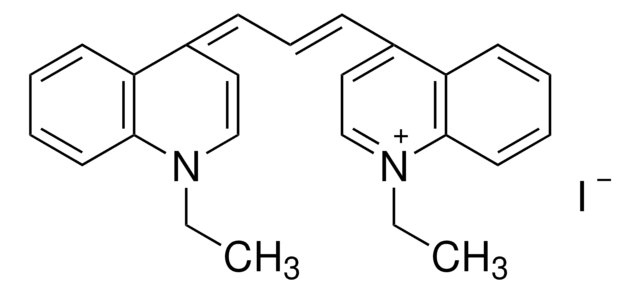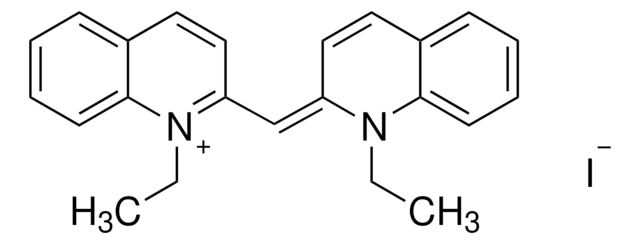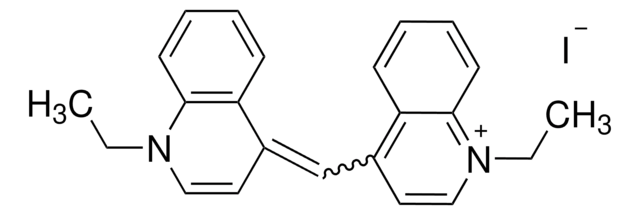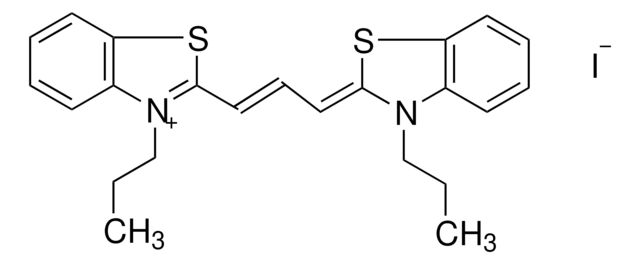Key Documents
173754
3,3′-Diethylthiadicarbocyanine iodide
Dye content 98 %
Synonim(y):
3-Ethyl-2-[5-(3-ethyl-2(3H)-benzothiazolylidene)-1,3-pentadienyl]benzothiazolium iodide, DTDCI, DiSC2(5)
About This Item
Polecane produkty
skład
Dye content, 98%
mp
249 °C (dec.) (lit.)
λmaks.
655 nm
ciąg SMILES
[I-].CCN1/C(Sc2ccccc12)=C\C=C\C=C\c3sc4ccccc4[n+]3CC
InChI
1S/C23H23N2S2.HI/c1-3-24-18-12-8-10-14-20(18)26-22(24)16-6-5-7-17-23-25(4-2)19-13-9-11-15-21(19)27-23;/h5-17H,3-4H2,1-2H3;1H/q+1;/p-1
Klucz InChI
MNQDKWZEUULFPX-UHFFFAOYSA-M
Szukasz podobnych produktów? Odwiedź Przewodnik dotyczący porównywania produktów
Powiązane kategorie
Zastosowanie
- Fluorescent contrast agent in three-dimensional fluorescence lifetime tomography.
- Dye for rapid genetic screening.
Cechy i korzyści
Hasło ostrzegawcze
Danger
Zwroty wskazujące rodzaj zagrożenia
Zwroty wskazujące środki ostrożności
Klasyfikacja zagrożeń
Acute Tox. 2 Oral - Eye Irrit. 2 - Skin Irrit. 2 - STOT SE 3
Organy docelowe
Respiratory system
Kod klasy składowania
6.1A - Combustible acute toxic Cat. 1 and 2 / very toxic hazardous materials
Klasa zagrożenia wodnego (WGK)
WGK 3
Temperatura zapłonu (°F)
Not applicable
Temperatura zapłonu (°C)
Not applicable
Środki ochrony indywidualnej
Eyeshields, Faceshields, Gloves, type P3 (EN 143) respirator cartridges
Wybierz jedną z najnowszych wersji:
Masz już ten produkt?
Dokumenty związane z niedawno zakupionymi produktami zostały zamieszczone w Bibliotece dokumentów.
Klienci oglądali również te produkty
Produkty
Graphene has emerged as the new wonder material. Being only one atom thick and composed of carbon atoms arranged in a hexagonal honeycomb lattice structure, the interest in this material has exploded exponentially since 2004 when it was first isolated and identified using a very simple method.
Nitric oxide (NO) as a signal transporter in neurons, endothelial cells and in the immune system.
Nasz zespół naukowców ma doświadczenie we wszystkich obszarach badań, w tym w naukach przyrodniczych, materiałoznawstwie, syntezie chemicznej, chromatografii, analityce i wielu innych dziedzinach.
Skontaktuj się z zespołem ds. pomocy technicznej









